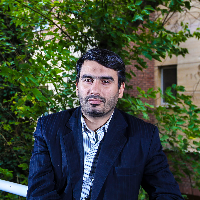Architectural Design Process Based on Transcendent wisdom, Investigating the effect of Mulla Sadra’s Basit al-Haqiqa rule on architectural design process
The existential simplicity of architecture can establish harmony between the field of the human living environment (architecture), the field of the human inner self and soul, and the field of existence and reality (ontological field). This concept is more important in the context of transcendental wisdom, especially under the rule of “Simple al-Haqiqah.” Using a combination of library documents, logical reasoning methodology, and qualitative content analysis, the author initially reviews the existing literature. Subsequently, by examining the foundations of transcendental wisdom, the author takes a step towards Sadra’s epistemology. The goal is to match the obtained components with the corresponding components in architectural design process models and to explain how these foundations from transcendental wisdom affect the design processes. The result demonstrates that the simplicity of the soul, about its internal powers, is encompassed by the simplicity of the necessary being about the entire system of existence. Since architecture is a function of the powers of the soul, including the power of imagination, the simplicity of the self is thus elevated. This crucial concept is framed within Mulla Sadra’s “basit al-haqiqa” rule, the most fundamental principle in the realm of ontology and epistemology that embraces plurality with the appearance of unity in multitudes. Consequently, this principle influences Sadra’s design process.
-
Spatial Components of the Physical Environment and Their Impact on Deep Learning (A Systematic Review)
Marzieh Aslani, Mohammadali Khanmohammadi *, Mahdi Hamzehnejad, Mahmoud Talkhabi, Farhang Mozafar
Bagh-e Nazar, May 2025 -
The Impact of Educational Environment On the Architectural Design Process of Students
Flora Fakourian *, , Mehdi Khakzand
Journal of Design Thinking, Summer and Autumn 2022



